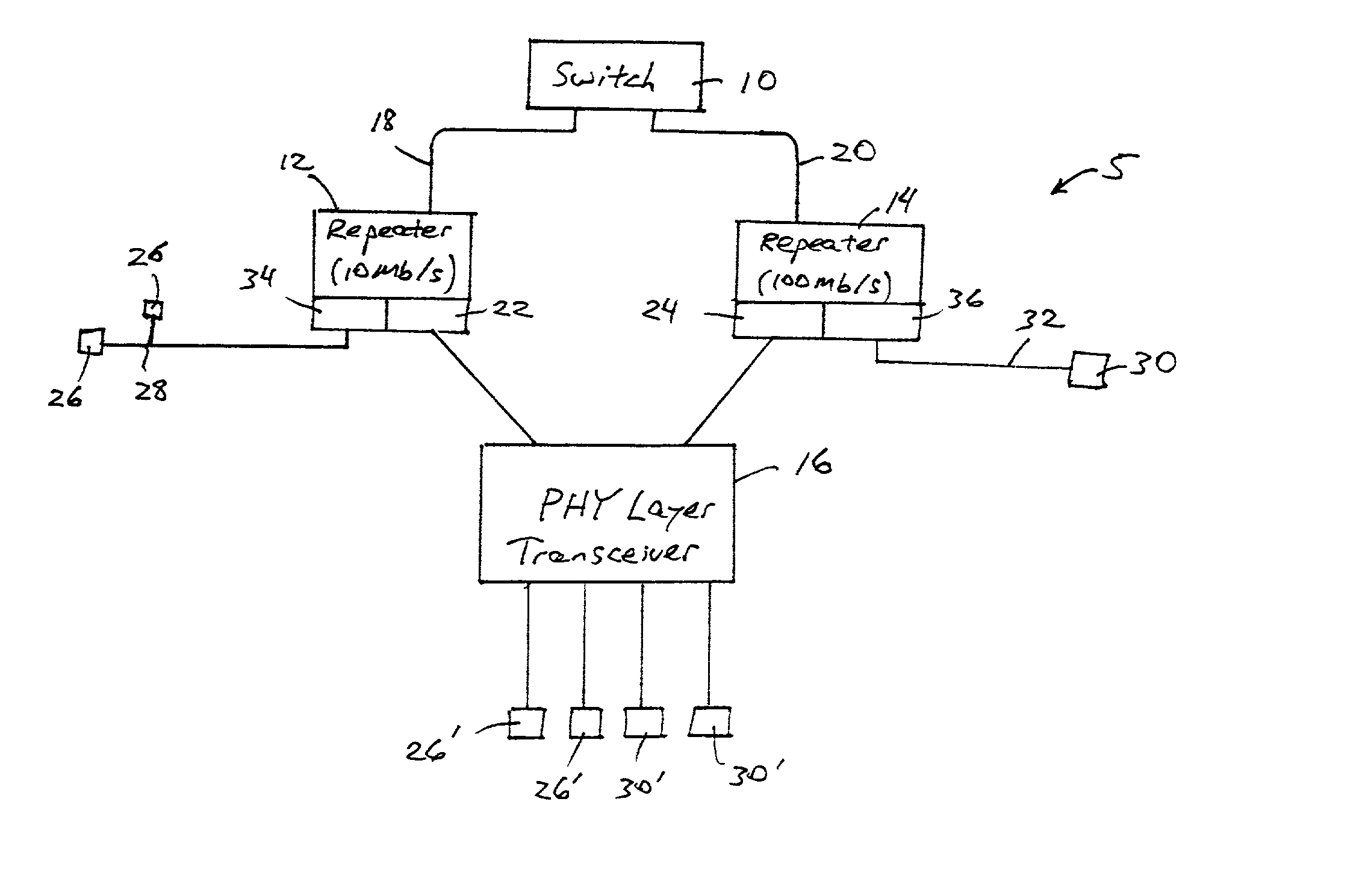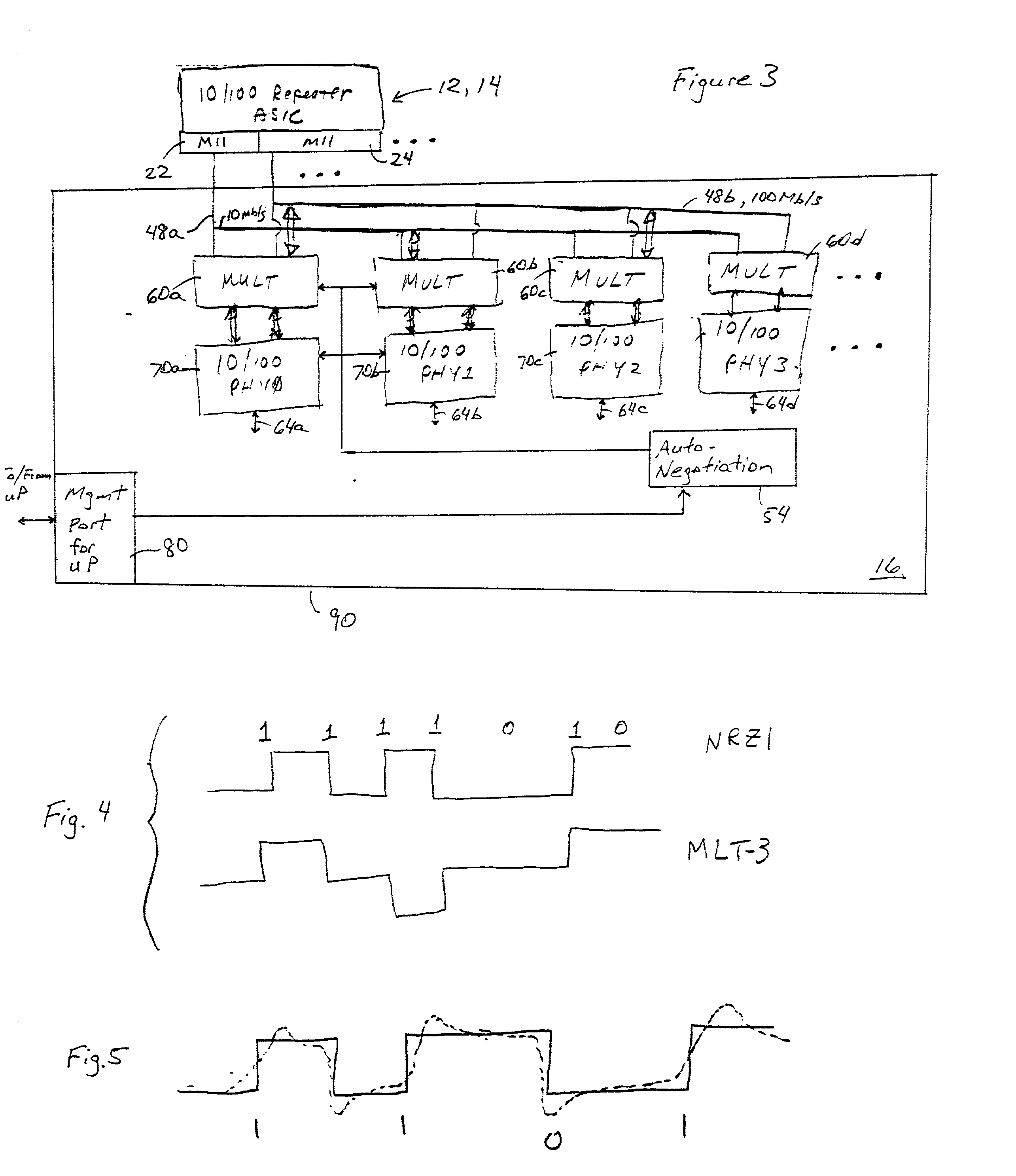Network transceiver for steering network data to selected paths based on determined link speeds
a network transceiver and network data technology, applied in data switching networks, instruments, baseband system details, etc., can solve problems such as inability to communicate with repeaters or switches, and unsuitable operating environments
- Summary
- Abstract
- Description
- Claims
- Application Information
AI Technical Summary
Benefits of technology
Problems solved by technology
Method used
Image
Examples
Embodiment Construction
[0019] FIG. 1 is a block diagram of an exemplary local area network architecture including a repeater system for transporting network data at different data rates according to an embodiment of the present invention. As shown in FIG. 1, the network 5 includes a network switch 10, a repeater 12 operating at a first data rate such as 10 Mb / s, a second repeater 14 operating at a second data rate such as 100 Mb / s, and a multiple port physical layer transceiver 16. The switch 10 and the repeater 12 transfer network data via a data link 18 operating at the first data rate of 10 Mb / s. The switch 10 and the repeater 14 transfer data via a different data link 20 operating at the second data rate of 100 Mb / s. The repeaters 12 and 14 transfer data to and from the network transceiver 16 via repeater interfaces 22 and 24 operating at 10 Mb / s and 100 Mb / s, respectively. As recognized in the art, the repeater 12 may also transfer network data to individual network workstations 26 operating at 10 Mb...
PUM
 Login to View More
Login to View More Abstract
Description
Claims
Application Information
 Login to View More
Login to View More - R&D
- Intellectual Property
- Life Sciences
- Materials
- Tech Scout
- Unparalleled Data Quality
- Higher Quality Content
- 60% Fewer Hallucinations
Browse by: Latest US Patents, China's latest patents, Technical Efficacy Thesaurus, Application Domain, Technology Topic, Popular Technical Reports.
© 2025 PatSnap. All rights reserved.Legal|Privacy policy|Modern Slavery Act Transparency Statement|Sitemap|About US| Contact US: help@patsnap.com



